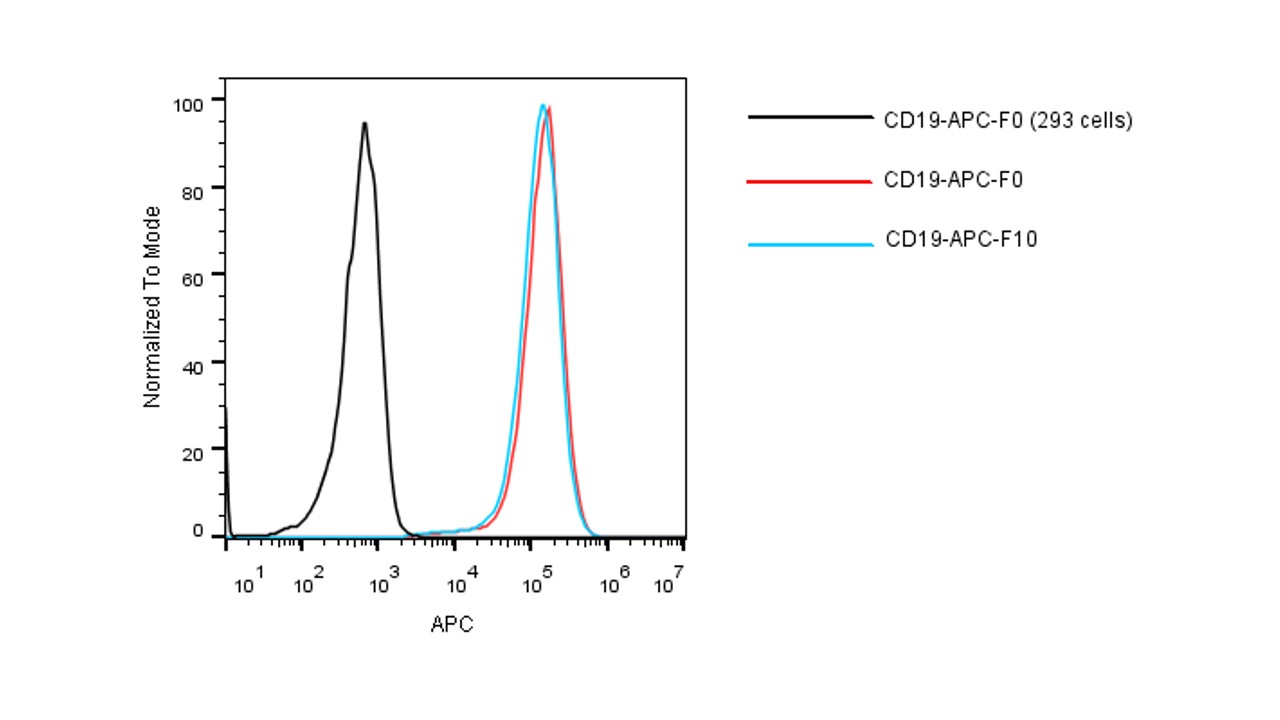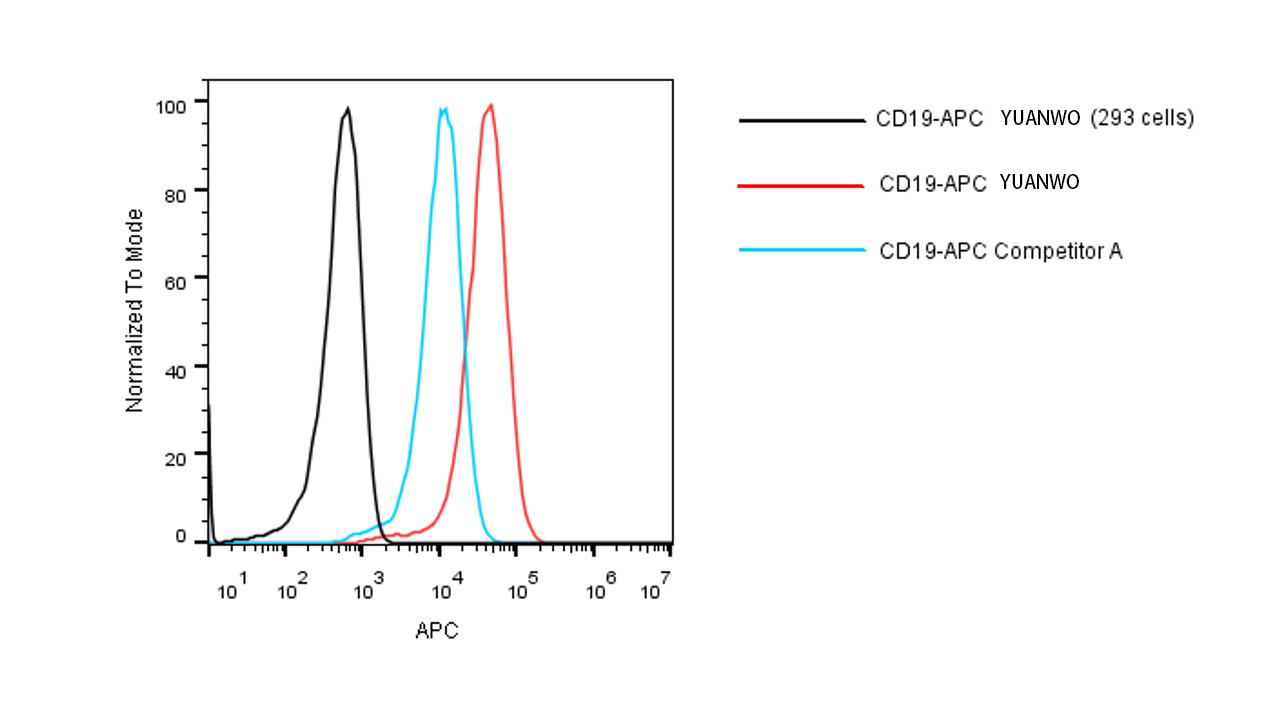

Flow cytometric analysis of anti-CD19 CAR expression. 5e5 of anti-CD19 CAR-293 cells were stained with 100 μL of 1:125 dilution (0.8 μL stock solution in 100 μL FACS buffer) of APC-conjugated human CD19 Protein (Site-Specific APC-Conjugated, ECD, His Tag, Cat. No. 11880-H08W1-SA) and negative control protein. Non-transduced 293 cells were used as a control (left). APC signal was used to evaluate the binding activity (QC tested). |
Binding activity of APC-conjugated CD19 protein to PBMC cells. PBMC cells were stained with FITC conjugated anti-CD3 antibody and APC-conjugated human CD19 Protein (Site-Specific APC-Conjugated, ECD, His Tag, Cat. No. 11880-H08W1-SA) and detected by flow cytometry. FITC signal was used to evaluate the content of CD3+ T cells in PBMCs. APC signal was used to evaluate the non-specific binding activity to PBMCs (QC tested). |
Flow cytometric analysis using APC conjugated CD19 protein. 5e5 of anti-CD19 CAR-293 cells were stained with APC-conjugated human CD19 protein (Site-Specific APC Conjugation, ECD, His Tag, Cat. No. 11880-H08W1-SA). Non-transduced 293 cells were used as a control (Black Histogram). The protein exhibited stable performance after multiple freeze-thaw cycles (10 cycles) |
Flow cytometric analysis using APC conjugated CD19 protein. 5e5 of anti-CD19 CAR-293 cells were stained with APC-conjugated human CD19 protein from two vendors (competitor A and SINO). Non-transduced 293 cells were used as a control (Black Histogram). The results demonstrated that SINO’s 11880-H08W1-SA has a higher fluorescence intensity than that of the competitor. |
Cancer Drug Targets

Zola H, et al. (2007) CD molecules 2006-human cell differentiation molecules. J Immunol Methods. 318 (1-2): 1-5.
Ho IC, et al. (2009) GATA3 and the T-cell lineage: essential functions before and after T-helper-2-cell differentiation. Nat Rev Immunol. 9 (2): 125-35.
Matesanz-Isabel J, et al. (2011) New B-cell CD molecules. Immunology Letters.134 (2): 104-12.
Carter RH, et al. (1992) CD19: lowering the threshold for antigen receptor stimulation of B lymphocytes. Science. 256 (5053): 105-7.








